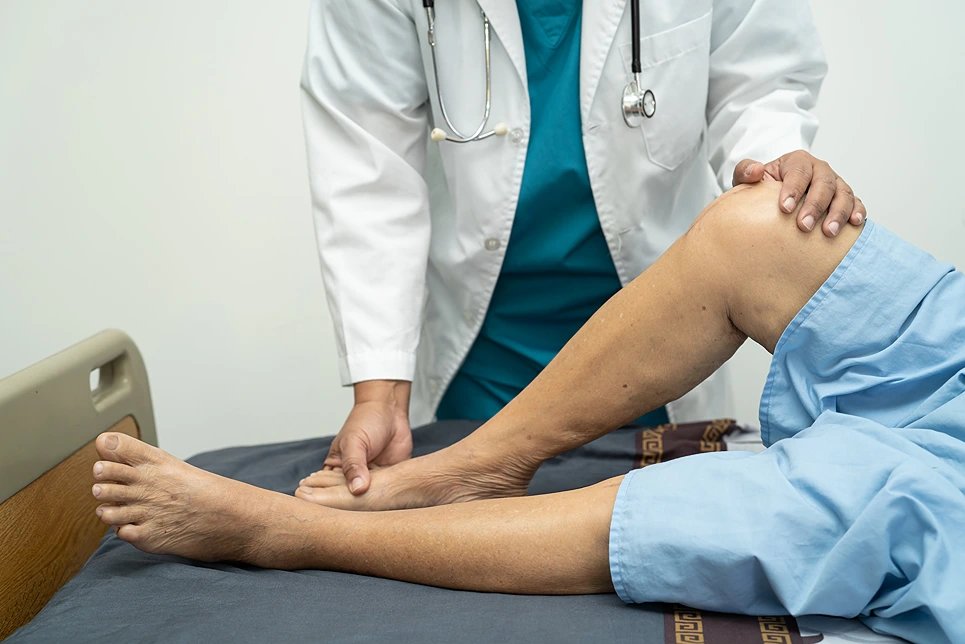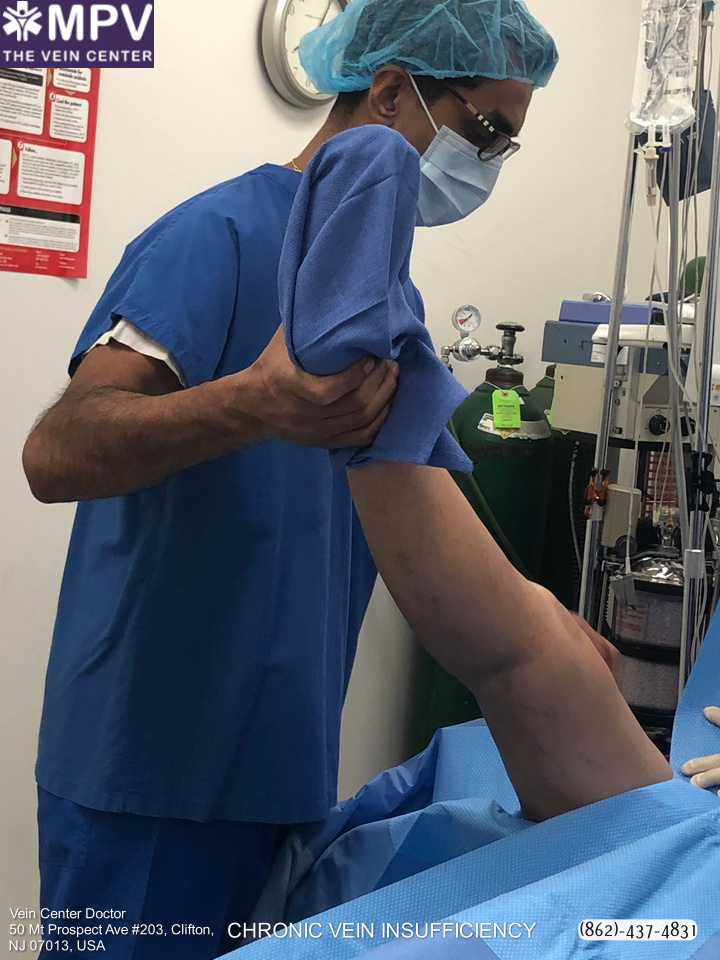Dealing with painful, slow-healing leg ulcers? If so, you likely have questions about what’s causing them and how to find relief. At The Vein Center Doctor, we have extensive experience successfully treating venous leg ulcers by addressing the underlying chronic venous insufficiency.
In this detailed guide, we will explore the diagnosis, causes, risk factors, symptoms, and varied treatment options for venous leg ulcers. We will outline the comprehensive treatment approach that our specialists have found most effective through experience. A core therapy we use is gradient compression, which is vital for treating the venous hypertension that causes these ulcers.
Living with unwanted veins is a thing of the past, when you can simply schedule a free consultation with Vein Center Doctor and find your ideal solution today.
Venous leg ulcers are open, painful wounds that develop on the lower legs, ankles, and feet when chronic venous insufficiency damages the veins and impairs blood circulation. They typically occur on the inside of the leg, just above the ankle.
According to a study by Marston et al., ulcers linked to venous insufficiency are often recurrent, returning after healing due to ongoing vein disease. The study reported that patients with chronic venous leg ulcers (CVLUs) treated with saphenous stripping had less ulcer recurrence (15%) than those treated with compression therapy (34%).
According to our experience at The Vein Center Doctor, the development of venous leg ulcers stems from increased pressure in the veins, often related to faulty valves. When the valves in the leg veins become damaged, usually from age, injury, or thrombosis, they allow blood to flow backward and pool in the veins.
This venous hypertension stretches the veins, weakens their walls, and causes fluid leakage into the surrounding tissue. The resulting swelling and inflammation are known as venous edema.
As Dr. Sood explains, “The combination of increased venous pressure, swollen tissues, and poor blood flow leads to skin and tissue breakdown. Minor injuries or irritations that a healthy leg would recover from quickly turn into open, non-healing ulcers.
“Once an ulcer forms, the damaged veins have even more difficulty providing oxygen and nutrients needed for healing.”
Common symptoms of venous leg ulcers include:
According to our specialists at The Vein Center Doctor, the first step is getting an accurate diagnosis. An NCBI article emphasizes the importance of evaluating patients with chronic venous leg ulcers (CVLUs) to find the underlying etiology by examining the ulcers and artery pulses, addressing systemic conditions, and controlling wound infection.
Venous ulcers are often misdiagnosed as diabetic ulcers or arterial ulcers, leading to improper treatment. Diagnostic tests can include:
Once venous insufficiency is confirmed as the culprit, treatment focuses on improving overall venous circulation and health while healing the open wound.

The Vein Center Doctor utilizes an integrated treatment approach that combines therapies to heal venous leg ulcers and correct the underlying vein problems for long-term results. Treatment options may include:
According to an NCBI article, identifying risk factors such as obesity, lack of mobility, smoking, and leg injury history is key. Lifestyle changes to manage these can help prevent recurrence. Dr. Sood advises:
A Cochrane review found that compression therapy is the mainstay of treatment for venous leg ulcers (VLU). External compression helps reduce swelling and improves blood flow velocity in the veins. Graduated compression stockings providing 15–20 mmHg of pressure are often recommended for daily wear.
Medications can address different aspects of venous leg ulcers:
Diligent wound care and addressing venous hypertension is key for healing and preventing recurrence. Treatments may include:
Procedures to eliminate damaged veins or create new blood flow pathways may be warranted for severe venous insufficiency. This helps restore healthy circulation and prevent skin breakdown.
Additional therapies such as exercise, electrical stimulation, and hyperbaric oxygen may accelerate healing.
According to our experience, effective treatment requires a multidisciplinary, phased approach tailored to each patient. Dr. Sood outlines the comprehensive venous leg ulcer treatment protocol we follow:
We perform advanced vascular testing to pinpoint venous insufficiency locations and determine if other issues like arterial disease are present. This allows us to develop a targeted treatment plan.
We fit patients with graduated compression stockings or bandages which help reduce fluid accumulation and venous pressure around the ulcer. It must be worn consistently to be effective.
Meticulous wound care is vital for preventing infection and stimulating healing. We recommend gentle cleaning, medicated dressings changed regularly, and advanced treatments for severe wounds. Keeping the wound moist and protected is key.
We address venous hypertension and insufficiency through procedures to eliminate damaged veins, restoring healthy circulation.
Medications may be prescribed to support wound healing and venous health. Anticoagulants help prevent blood clots that can further damage veins.
We provide tips for improving mobility, leg elevation, nutrition, and more to complement medical therapy and optimize outcomes.
We closely monitor wounds until full closure is achieved. Patients then enter a maintenance program to prevent recurrence.
According to our experience, compression therapy is a cornerstone of treatment for venous leg ulcers when chronic venous insufficiency is the underlying cause.
Research confirms compression therapy’s efficacy. A systematic review of over 60 studies found that compression increased ulcer healing rates by 32% compared to no compression. Patients who wear compression stockings daily after ulcer healing have 3-year recurrence rates under 20% versus over 80% recurrence in patients not using compression.
Compression is effective because it:
To sum it up, graduated compression is a simple yet powerful tool for healing venous leg ulcers when used consistently and correctly. It helps address the underlying venous hypertension central to this condition. While compression alone may not be enough for severe ulcers, it provides invaluable adjunctive treatment combined with other therapies.

If you are dealing with persistent, painful venous leg ulcers, we encourage you to schedule a consultation with The Vein Center Doctor. Our specialists will perform advanced medical imaging to identify any faulty veins or impaired circulation contributing to your condition.
We will determine the best treatment options to heal your ulcer, correct the underlying venous dysfunction, and get you back to an active, ulcer-free life.
Don't wait to seek treatment - book your appointment now.
Find exactly what you need to get rid of your vein-related problems. Dr. Sood and the rest of our team at Vein Center Doctor are ready to help: schedule your free consultation today.
Most Insurance is accepted for treatment